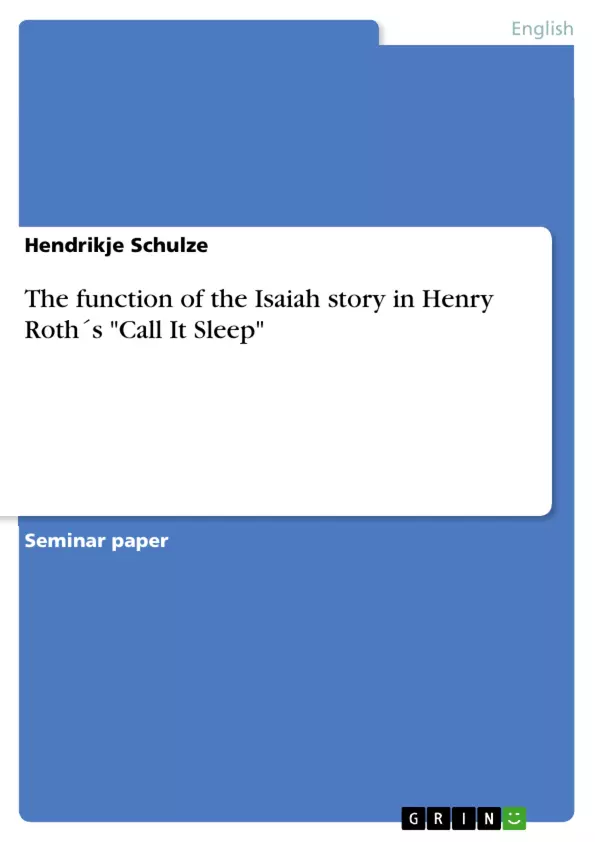This paper in concerned with the novel Call it Sleep, a work by the Jewish-American writer Henry Roth. First of all, some general facts about the author will be presented to provide an appropriate context for the further discussion. Afterwards, the structure of the novel will be explained by giving an overview over the main symbols and their function within the book.
The emphasis will then be put on the characterization of David Schearl, the central character of the novel. His search for purification and salvation will be scrutinized with regard to the "Isaiah Story", a passage of the Old Testament, which is strongly linked to the topic of redemption. At the end of the paper the question whether David can be called a her-messiah because of his strong sensibility concerning religious themes and experiences will be discussed.
Table of Contents
- Introduction
- General Facts about Call It Sleep and its Author Henry Roth
- The Structure of the Novel
- A Characterization of David Schearl
- The Function of the "Isaiah Story" in Call It Sleep
- The "Isaiah Story” in the Old Testament
- The "Isaiah Story” in Call It Sleep - Book III "The Coal", Chapter IV
- The symbolic meaning of the "Coal"
- The Function of the “Isaiah Story” for David
- David Schearl - A Hero-Messiah?
- Summary
Objectives and Key Themes
This paper analyzes the novel Call It Sleep by Jewish-American writer Henry Roth, exploring the central character David Schearl's search for purification and salvation. The paper examines the significance of the "Isaiah Story" within the novel's context and considers whether David can be classified as a hero-messiah.
- The significance of the "Isaiah Story" in David Schearl's journey of redemption.
- The symbolism of the novel's central imagery, such as the cellar, picture, coal, and rail.
- The impact of the immigrant experience on David's development and perspective.
- The relationship between David's personal struggles and the broader themes of Jewish identity and religious experience.
Chapter Summaries
The paper begins with an introduction and general facts about the novel and its author, including Roth's own experiences as a Jewish immigrant. The structure of the novel is then discussed, focusing on its five parts: a Prologue and four books titled "The Cellar," "The Picture," "The Coal," and "The Rail." Each book represents a significant symbol in David's life, offering insights into his evolving emotional and spiritual landscape.
The paper further explores the characterization of David Schearl, highlighting his emotional sensitivity and his search for purification and salvation. It examines how the "Isaiah Story," a passage from the Old Testament, relates to David's quest. The analysis delves into the symbolic meaning of the "coal," which signifies both filth and purification in the novel. Finally, the paper examines whether David's experiences and his strong connection to religious themes qualify him as a hero-messiah.
Keywords
The key themes and concepts explored in this paper include Jewish-American literature, immigrant experience, symbolism, the "Isaiah Story," redemption, purification, hero-messiah, and the novel's structure as a reflection of David Schearl's journey.
- Citar trabajo
- Hendrikje Schulze (Autor), 2002, The function of the Isaiah story in Henry Roth´s "Call It Sleep", Múnich, GRIN Verlag, https://www.grin.com/document/7665



